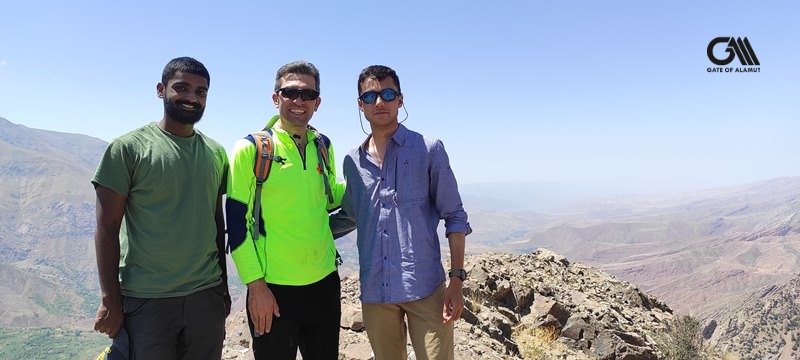Fortresses of solitude: a journey through northern Iran’s Alamut Valley
Armaan journeys through Iran’s northern Alamut region in the South Caspian province of Qazvin, and soon finds himself captivated by the ruined fortresses that rise from the rocky landscape.
By Armaan – 30 June 2023
I had just bitten into a sugar cube when we almost set the mountain on fire.
There, in northern Iran, having come in search of ruined castles and assassins, Ranvijay, Hosein, and I watched the tongues of a hastily made fire leap up the mountainside. Ali, our moustachioed mountain guide – strong for his years and droopy-eyed – had just told us that in Iran, the custom was to take the sugar first and then the tea, and let your mouth sweeten the tea, rather than the other way around. Now, he was using his cap to beat the flames out of the dry grass, leaving islands of black earth in a yellow-green sea.
In some way or other, then, we left our mark on Alamut Valley, where our host Hosein was showing us the castles of Alamut, Lambesar, and Navizar, all of them once strongholds of the mediaeval Nizari Ismaili State – better known as the Order of Assassins, or the Hashashins. A peculiar kind of order (or empire? or Shia sect?), relying on subterfuge and guerrilla warfare to control vast stretches of hostile Sunni territory.
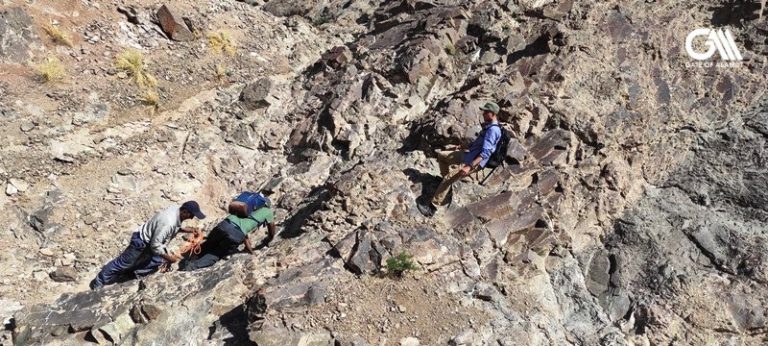
We were trekking up to Navizar Castle from Garmaroud village when the fire started. The fortress, lesser known among the castles of Iran, sits on a spur of rock that caps a large mountain, towering over slag that stretches up miles of mountain face oppressed by a strong overhead sun.
Strange to say, but it was a good feeling – the sweetness in my mouth and the grass burning warm on my face, both products of Ali’s hospitality. I wondered if Freya Stark had felt the same when she had roamed the Alamut Valley in the 1930s. She exemplified the quintessential travel writer – a keen observer, but one whose perspective and stubborn sense of self remained unchanged throughout her wanderings.

Ali eventually managed to put out the fire, and we continued up. It was more than halfway to the top when he informed us that we were standing on a burial ground for Mongolian war horses. Like the other Assassin castles, Navizar had been destroyed by the trebuchets of Hulagu Khan, grandson of Genghis, in the 13th century Mongol conquest of Iran. And all throughout the trek I was imagining those panting riders unhorsed, suffering the shifting rocks and bleeding daylight to dismantle an empire in hiding.
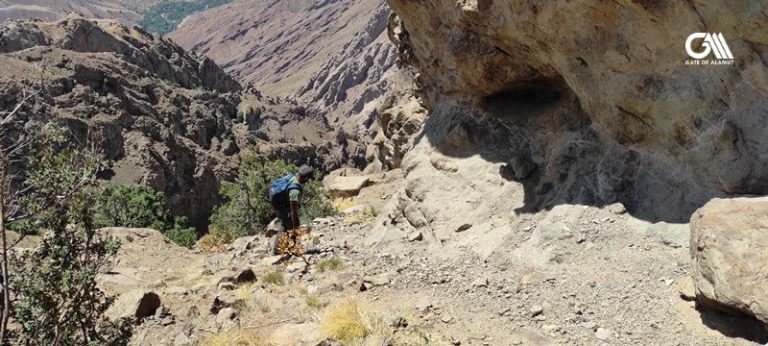
There were more impressive castles than Navizar in Alamut Valley, some with their towers and gateways intact. But it was this obscure mountaintop fortress that had caught hold of our imagination. The last recorded visit here was a British expedition in 1960, and it had not been photographed since, either. Ali himself, despite living in nearby Garmaroud, had never climbed up to it. It was virtually unexcavated, and when we reached its boundary – what was once a rocky rampart surrounding a citadel that had all but crumbled – it was for the first time I felt I saw something unseen. As we trudged through the stony ruins, to our astonishment, thousand-year-old potsherds, many of them retaining their original colour and glazing, emerged out of the soil beneath our feet. I felt like a treasure hunter whose treasure was coloured clay. There is something dreamlike about knowing that you are the first to have seen something in the world, especially when that something is a thousand years old.
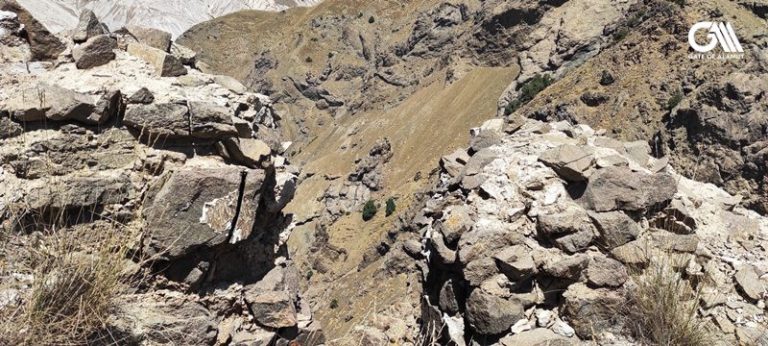
After our descent, we spent the evening at Ali’s house. He told us about his days as a radio operator in the Iran-Iraq War. His living room had no furniture. It was layered with carpets of many colours. We sat for a long time on his floor, chewing sugar and sipping tea, talking of small and big things.
Nearly a century ago, Freya Stark had seen almost everything we saw in Alamut Valley. And there was certainly nothing spectacular, at least in archaeological terms, that we found at Navizar. To the modern-day traveller, it may seem that there is no corner of the earth left uncharted, no place spared from someone making a quick buck off of tourists. And to the modern-day reader, it may seem that novelty in travel writing is a thing of the past. But as Wade Davis writes in a piece about the self-obsession of exploration, “the only true and original explorers… were those who walked out of Africa some 65,000 years ago.” Of the many places I have visited, my mind always drifts back to Navizar Castle, because it reminds me that there are still treasures to seek out in the world, even if they are handfuls of colourful potsherds. Even though you may walk the paths that many, like Freya Stark, have trodden before you, some paths give you the illusion that you are the first to walk them. And the illusion itelf is enough to keep going.


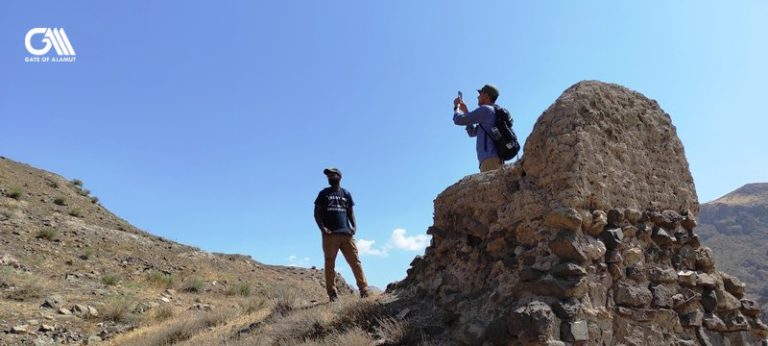
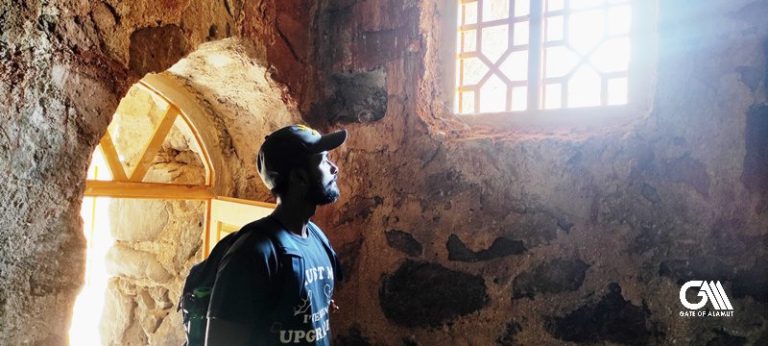
The link to the original article:
https://www.cntraveller.com/article/journey-through-alamut-valley

